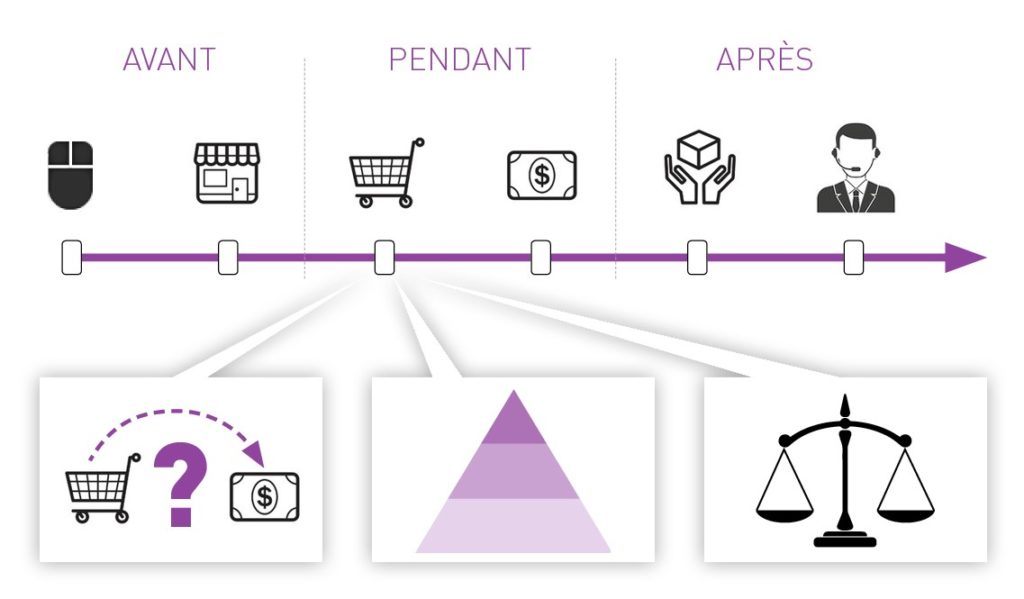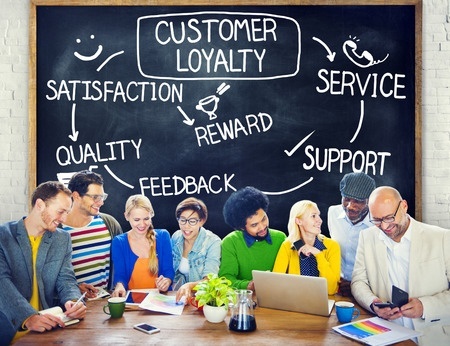It seemed natural to share this perspective with our own readers!
What role does CRM play in your customer approach?
Dominique Seguin: CRM is an essential tool for customer relations. Today, you wouldn't imagine working without a smartphone, email, or other tools that save us all time! CRM, an application for managing customer relationships, offers much more than the technical and daunting image that salespeople have of it: you can manage your follow-ups, analyze your figures, send emails, store your customer data for other company departments, and evaluate your sales performance.
Sales representatives don't like CRMs because they feel they have to re-enter their workdays to fill out tables that no one really reads. Like any tool, it has its constraints, let's be realistic, but we observe among our clients that no experienced sales representative still risks managing their opportunities on Excel, their follow-ups on a notepad, their forecast on a blank sheet. The challenge of ownership by the teams is therefore particularly strong, and this requires a genuine perception of the associated benefits!
The topic isn't new (we even conducted and published a study in 2012 entitled: "Salespeople and CRM, why so much hate?"), but it remains relevant.
Our advice: seize this tool as an opportunity and make the most of its features!
In this digital age, how do you interest a prospect on the phone without appearing intrusive?
Dominique Seguin: The rules don't change! If we are interesting, people will be interested! Otherwise, they tell us in a very simple way: "I'm not interested."
How to interest our prospects? By talking to them about THEIR concerns. Either we have found material available on the web and it will serve as a hook, or we bring up one or two topics specific to the targeted market and we see if it bites.
Don't set incredible expectations regarding the rates of calls converted into appointments: the average is less than 10%. But if you prepare well with an adapted pitch, you can double your performance.
What importance do you give to social media today to increase sales?
Dominique Seguin: Let's just say that the sales function is on the verge of uberization!
50% of the purchasing process is completed without the involvement of a salesperson. Digital presence has become the primary competitor in this field.
How can you expect to be more relevant and demonstrative than a 2-minute 3D YouTube video that highlights all the product's features with pleasant music, precisely when you need it? You need to create value elsewhere!
Be even more distinctive in understanding the client's challenges (stop asking them what they want, ask them why they want it!), emphasize the cost of the current situation and the observed dysfunction, and finally, remain present in their mind after leaving their office.
Social media is a fabulous opportunity to stay in touch with the customer after the appointment stage.
Previously, the brochure served this role, but now you can showcase your journey, expertise, and current news with modern and interactive tools.
In other words, you can influence and highlight your recommendations. In short, if the brochure is ending, the salesperson 2.0 is just beginning, making the job even more sharp and exciting!
Beyond the tools, what enables a salesperson to become a top performer?
Dominique Seguin: Method, method, and method! Beyond the commercial “talent”, often considered innate, it is method that truly makes the difference. In sales, as in any profession, method is key.
Do you think a baker wonders every night how to make good bread? No, every night he follows a proven recipe. It's less tiring, and he's sure to be able to serve his customers in the morning!
Good salespeople don't reinvent the wheel every day, hoping to have the right smile at the right moment, or the right formula, or the right product…
The bait matters less than the trap itself! It's a bit harsh as a mantra, but it's so true. The trap is the sales techniques repeated every day to constantly improve the gesture.
Very good salespeople, well-versed in these principles, sometimes fail during the negotiation phases... Why is this and how can it be avoided?
Dominique Seguin: The main pitfall comes from the lack of preparation. Difficult training, easy war! Most salespeople prepare by applying the handbrake. This is guaranteed failure and the good old recourse to the weakness of the salesperson, the price reduction begged from their manager.
You see the good salespeople in the turns, not in the straight lines. Negotiation has nothing to do with selling. Great negotiators are not salespeople. And the reverse can be true.
A good negotiator will be able to create a new territory for both parties that does not exist at the beginning of the negotiation, each initially focused on protecting their own.
The challenge is to move away from this perspective and focus on finding a new configuration. Otherwise, we're just keeping score, and the customer often wins that game!
Let's shift the established frame of reference. The real issue that matters to a client is not winning the negotiation, but benefiting as quickly as possible from the advantages provided by the desired solution that justified the purchase approach, to resolve the identified problem (expensive machine, slow service, inefficient process, etc.).
You have been a Sales Performance consultant at KESTIO for almost three years, what is your assessment of these years?
Dominique Seguin: After 18 years of operational experience in sales, from the field to managing a P&L of 180 million euros, I thought the transition would be easy.
I can say that my best decision after 6 months was to start from scratch to learn a new profession, a profession where you start by thinking before acting, where you study before deciding.
A profession that consists of helping our clients approach their challenges differently because our time is not theirs, and that is the value we bring to them.
An operational person does not need a consultant to ensure daily execution; they know very well how to do it and are experts in their field. We will never know as much as our clients, their teams, their culture, their history, their own clients...
The consultant provides the ability to simplify complexity, to be a witness to best practices across all sectors, to identify what causes failure, dysfunction, to find the balance to calmly address blockages, to change employee practices through genuine long-term support without the pressure of figures.
We help our clients free up space in their daily lives, to better prepare for the future and enable their teams to overcome challenges and continue to lead the way in their markets.
My operational background is very useful because I understand my clients' lives. I know their doubts, their desire to succeed, the incredible energy they put in every day to achieve their goals with their teams. Often, we provide the small trigger that makes everything move...
Maybe it's also because at KESTIO, we don't take ourselves too seriously, and that makes all the difference when an Executive Committee entrusts us with a serious subject. They don't need more complications than their subject already gives them!
What is your favorite mobile app?
Dominique Seguin: I love Pocket because as an infovore, I like to consume content constantly. Between newsletters, monitoring, blogs, news sites, how to find an application that easily and intuitively groups all my reading lists? Pocket does it very well, I can't live without it anymore.
KESTIO supports companies (from SMEs to large corporations) in acquiring and retaining their customers through a dual expertise in Commercial Performance and Customer Experience.






